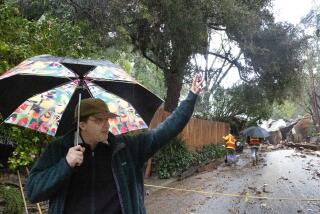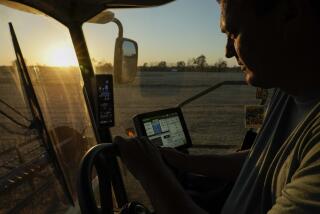When waiting for the rain just wonât do
lakin, kan. -- Water is prized in western Kansas, where aquifers are suffering and farms are miles wide and generations deep. A scant half-inch of rain can mean all the difference in a growing season.
But when precipitation comes in the form of fist-size hail, it can damage or even destroy crops.
Thatâs where the Western Kansas Weather Modification Program and other cloud-seeding operations across the West come in. The Kansas program is among about 10 that aim to tinker with the weather -- either by trying to cut the size of hail or boost rainfall and snowpack. They do it largely by shooting storm clouds with silver iodide.
Other countries have also used or considered using weather modification. The United Arab Emirates has investigated cloud seeding to increase rainfall. China has announced plans to use cloud seeding to manage rainfall during the 2008 Olympics, and Indonesia has used it to try to fight fires.
Cloud seeding has a host of critics, including those who say there is no good science to support it and who warn that it may cause less rain and harm the environment.
But as water supplies show signs of stress around the globe and insurance companies add up hail-damage payouts, weather modification programs persist.
âWhatâs beginning to happen is that worldwide, people are realizing that water, especially fresh water, is a very precious resource, and we need to do what we can to increase the availability of that resource,â said Bruce Boe, director of meteorology for Weather Modification Inc., a Fargo, N.D.-based company that has been seeding clouds since the 1960s. The company has contracts in the United States, Africa, Southeast Asia and Canada, where it does business with insurance companies.
âTheyâll say, âWe paid out $500 [million], $600 million in claims on hail damage, and the forecast is for more hailstorms, so we want you to come in for a couple million dollars and take care of the hail,â â Boe said.
Cloud seeding was developed to try to increase rainfall. The theory is that the silver iodide, which has a structure resembling that of ice, creates raindrops in the clouds, increasing precipitation and reducing moisture for hail formation.
In the United States, weather modification programs are largely run by individual states and counties. But a measure before the U.S. Senate would allocate $10 million a year to establish the Weather Mitigation Advisory and Research Board, which would study weather modification programs and develop policy.
Kansas started its program in 1975. The Western Kansas Weather Modification Program covers about 8,000 square miles and is used about 85% of the time for hail reduction. It was briefly extended into northwest Kansas in the late 1990s, but residents voted it out, fearing that it was reducing their rainfall.
The program operates with four planes from April through September. Program manager Walt Geiger monitors the weather from a radar station at the tiny Kearny County airport in Lakin. When he sees a storm developing, one with âlots of strong vertical actionâ that could be a hail producer, Geiger notifies the pilots, who head into the storms in single-engine planes, armed with nerves and bayonet-size canisters of silver iodide.
A 1998-99 study of the Kansas program found that while there was a statistically significant reduction in hail that year, there was no evidence to support the programâs attempts to increase rainfall.
The science behind cloud seeding, while âexcellent at the microscopic level,â doesnât translate well outside the lab, says Terry Kastens, a professor of agriculture economy at Kansas State University, which conducted the study. âThe practicality of whether you can actually get enough of the iodide in the air is a really big question,â he says. âA lot of times, we joke, itâs like shooting a peashooter at the clouds.â
David Brenn, the programâs director, insists he has seen the benefits of the hail-reduction program. He says it has been peer-reviewed several times, including by the Kansas Water Office, and has been found to have a cost-benefit ratio of about 1 to 37.
âIf youâve got corn and youâve already irrigated it three times and you get it hailed out, that water is lost,â Brenn says. âAnd so one way to look at this, as it ties back to production agriculture, is that by reducing hail, weâre not producing [crops] and then Mother Nature takes them away.â
Eradicating hail is not the programâs aim, he emphasizes. Rather, it is âto reduce the intensity of the hail, either through the size of the hail or whether the hail is soft or hard.â
But Mike Standley, whose family has farmed in southwest Kansas for about a century, says he is concerned that cloud seeding may be costing him precious rain. He has noted a lack of regular afternoon thunderstorms.
âNow the day when we have one little storm popping up, theyâll be flying up and around it, and it just seems to fizzle out,â he says.
Standley says he would like to see solid proof that cloud seeding works. With 14 to 19 inches of precipitation a year in the area, he canât spare any moisture.
âI can raise crops with hail,â he said. âBut I canât raise crops with no moisture.â
More to Read
Inside the business of entertainment
The Wide Shot brings you news, analysis and insights on everything from streaming wars to production â and what it all means for the future.
You may occasionally receive promotional content from the Los Angeles Times.










